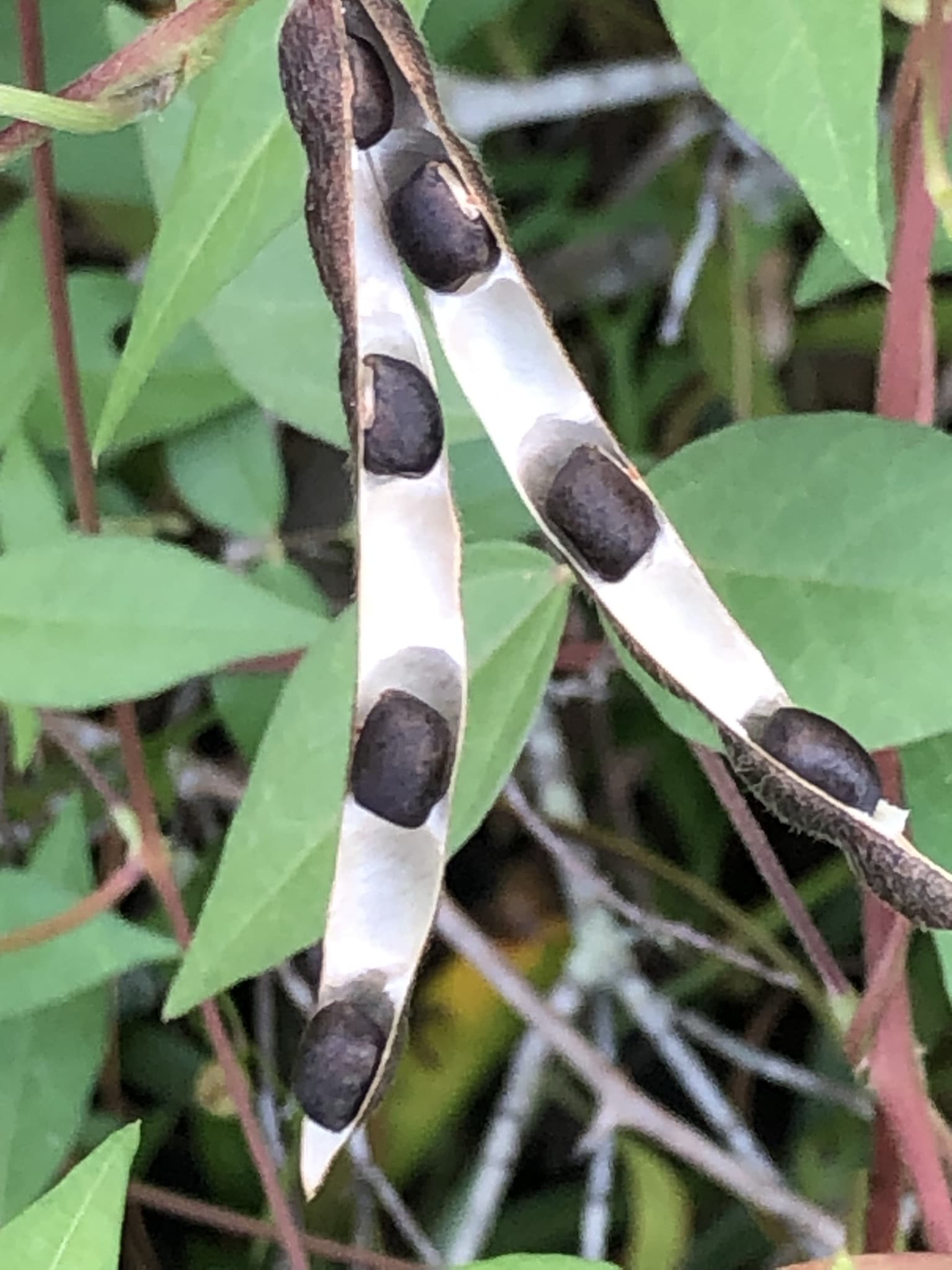I do like to eat from the wild, where there are so many interesting things to try, large and small. One of the smallest of them is ripening on the vine as we speak – Hairy Cowpea (Vigna luteola). The bright yellow flowers are easy to spot this time of year (fall as of Wednesday!) on this profuse vine growing along the edges of our tidal marshes and wet meadows. A closer look brings the green and brown pods into view, either of which make for tasty eating.
If you like peas, this is a small version much like any of the cultivated varieties. The green beans can be eaten raw or cooked (whole pods or shelled peas). The dried brown peas, which normally pop out of the pods as they dry and twist open, make a nice hummus. Although it takes quite a few pods or beans to make even a small dish, you will not be disappointed in the taste. Even the flowers can be eaten raw or cooked.

Of course, we are not the only critters that eat this plant. Hairy Cowpea is a larval host plant for several lepidoptera, including Cassius Blue, Gray Hairstreak, and Long-Tailed Skipper butterflies. The flowers are visited by numerous pollinators and the leaves and vines are browsed by herbaceous mammals. But fear not, this is a prolific plant that at times can cover up other shrubs and small trees where it grows.
The common and scientific names for this species describe its characteristics quite well. The pods of Hairy Cowpea are quite “hairy”, the beans smooth: not to be confused with another wild pea that can grow nearby – Fuzzybean (Strophostyles). As the name Fuzzybean implies, the beans are fuzzy, but the pods are smooth, and the flowers are usually purple. Cowpea refers to varieties of peas cultivated as fodder for cattle.
The Hairy Cowpea’s genus and species names are both derived from Latin, vigna meaning vine, luteola meaning yellow. For those of us working with scientific names, this makes it easy to remember. Yes, most of us have at least a basic knowledge of Latin or, as in my case, have a great dog-eared reference of Latin roots and prefixes.
As with many other plants, this species becomes more apparent when it blooms. The so-called “aspect dominance” of the bright yellow flowers is usually what catches our eyes. You might just walk right on if not for this dominant feature. This is how many plants advertise to pollinators that nectar is waiting for them, along with the pollen that will be shared with other blossoms. Plants and pollinators are closely connected in this way, and those of us that like peas are grateful.
Hope to see you in our great outdoors!